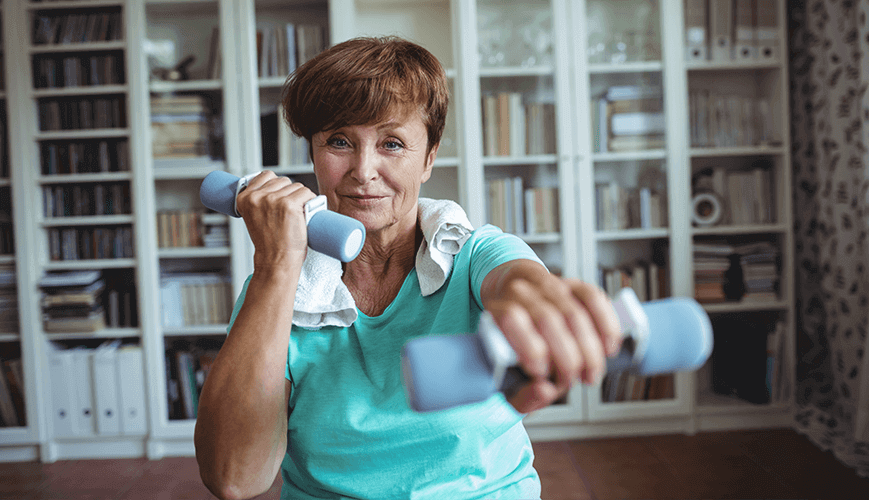Active and Aligned: Taking the ‘Old’ Out of the Golden Years
By Martha Michael

Last century, seniors were often found on porches, sitting in rockers doing needlepoint.
But nowadays, the oldest members of our population, many of whom don’t even respond to the title of “senior,” are living life in ways our grandparents could never have dreamed, and it’s partially because of healthy choices such as physical exercise and regular visits to the chiropractor.
In years past, Grandma played checkers or bridge for fun, but today we have older people hiking, biking, walking, swimming, dancing and golfing into their 90s. The more they move, the more they like to move, and you see them walking in groups, biking in clubs, and playing in tournaments, because they see the benefit to staying healthy and fit.
According to the Center for Disease Control and Prevention, “Physical activity is essential to healthy aging. As an older adult, regular physical activity is one of the most important things you can do for your health.”
So, what are these “mature” individuals doing for exercise? Many have begun biking and swimming on a regular basis. A recent study conducted by Indiana University found that swimming three to five times a week, for three to five miles, postponed the effects of aging for several decades.
For those who don’t like cold water, tennis and golf are perennial favorites. Tennis burns calories, reduces blood pressure and stress, and ultimately reduces a person’s risk of developing heart disease, long considered the biggest killer for both men and women. Golf is not only a convenient excuse for going outside and spending a day with friends, but a report from the Karolinska Institutet in Sweden from a study following 300,000 golfers says: “Those who continued to play golf as they aged were expected to live five years longer than non-golfers who were the same age.”
The combination of being outside for 4-5 hours, walking at a fast pace for 5-6 miles, and the social and psychological aspects of the game make it especially beneficial to seniors. A faster sport that’s picking up speed among seniors is bicycle riding. Between 1995 and 2009, the most recent year National Household Travel Survey data is available, the rise in biking among people ages 60-79 accounted for 37 percent of the total nationwide increase in bike trips.
When baby boomers were young, adults were more often seen in suits and dresses than on bikes, but now you see aging boomers riding in towns, on vacation and, occasionally, even competitively. Hopefully, they can enjoy cycling for decades beyond former expectations.
Aches and Pains
But what do they do about sore joints, poor balance, and loss of dexterity, which are inevitable conditions that come with advanced age?
The availability of regular chiropractic care to treat sore joints and offer spinal manipulative therapy on neck aches and back pain has enabled thousands of seniors to begin or continue living a healthier lifestyle.
“Routine adjustments for active seniors serves two main purposes,” said Dr. Steven Knauf, Director of Chiropractic and Compliance at The Joint Chiropractic. “The first is that it helps prevent injury during activity by improving proper movement of the body. Secondly, routine care can add years to a patient’s involvement in any sport or hobby by decreasing the amount of stress placed on joints and muscles. It just makes sense that if you enjoy being active that you need take care of your body.”
According to U.S. Census Data, 20 percent of Americans will be over the age of 65 by the year 2040. The growing senior population may not have traded the front porch for the ski slopes, but with the combination of daily fitness and regular chiropractic care, it’s possible for some to be very active into their 90s.
Yesterday, walkers were metal support systems for 60 to 90-year-olds. But today, walkers are 60- to 90-year-olds whose support systems are diet, exercise and regular chiropractic care.
The information, including but not limited to, text, graphics, images and other material contained on this page are for informational purposes only. The purpose of this post is to promote broad consumer understanding and knowledge of various health topics. It is not intended to provide or be a substitute for professional medical advice, diagnosis or treatment. Always seek the advice of your chiropractor, physician or other qualified health care provider with any questions you may have regarding a medical condition or treatment and before undertaking a new health care regimen, and never disregard professional medical advice or delay in seeking it because of something you have read on this page.